Discover the Canadian Goose
The Canada Goose, with its elegant black and white plumage, is one of the most recognizable migratory birds in North America. These majestic birds play a crucial role in the ecosystems they inhabit and captivate bird watchers with their beauty and complex social behavior.
Identification of the Canada Goose
Physical Description
The Canada Goose can be identified by its long black neck, black head with white cheeks, and a gray to brown body. Adults can weigh between 3 and 6 kg, with a wingspan ranging from 127 to 170 cm, making them easily distinguishable.
Differences Between the Sexes
Males and females are very similar in appearance, although the male may be slightly larger.
Plumage and Seasonal Changes
While their plumage remains relatively constant throughout the year, young birds have fluffier plumage that refines as they mature.
Habitat and Distribution
Canada Geese prefer aquatic habitats, such as lakes, ponds, rivers, and coastal areas. They are widespread across Canada and the United States, with migratory populations moving south for the winter.
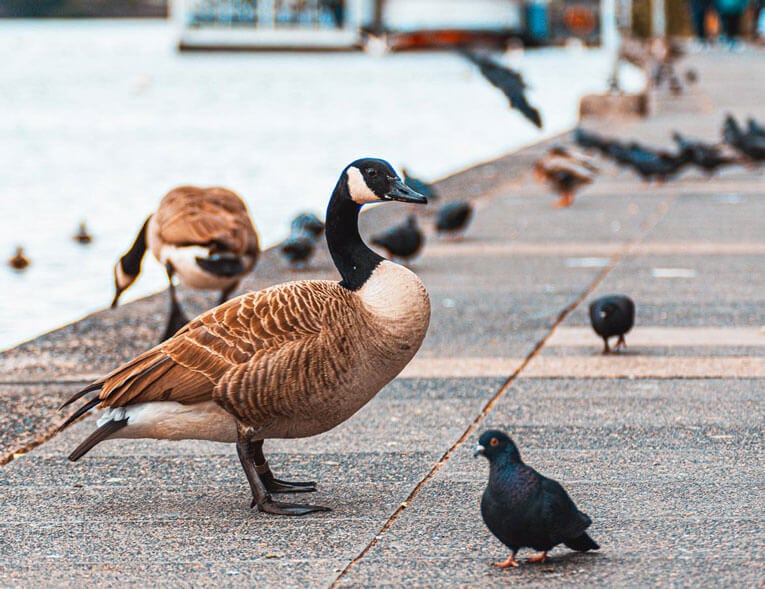
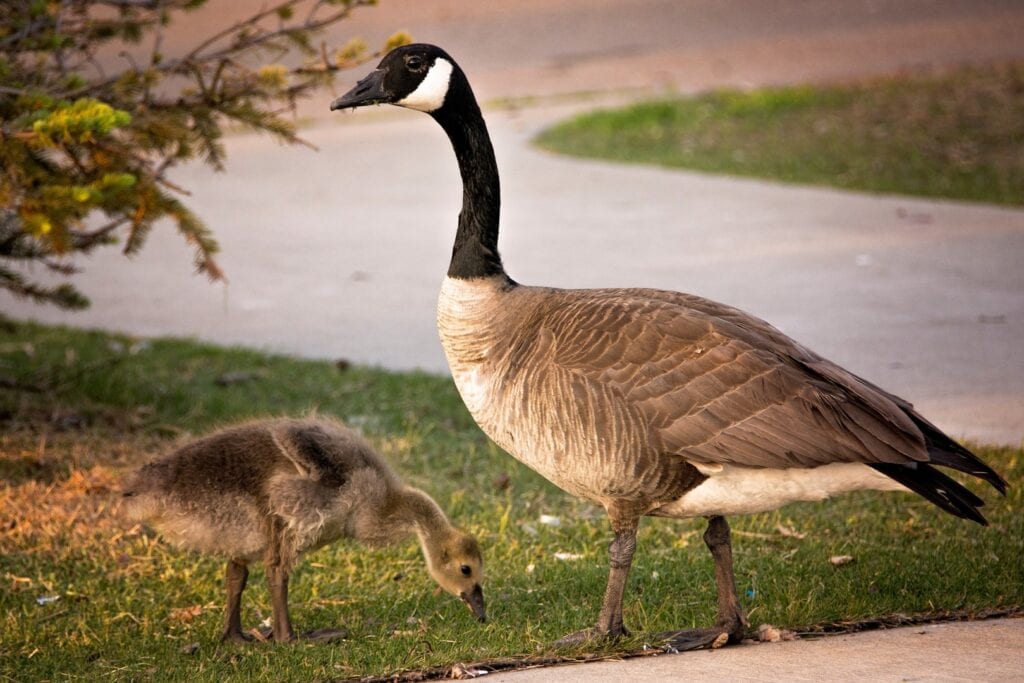
Behavior and Lifestyle
Feeding
These birds are primarily herbivores, feeding on a variety of aquatic plants, grasses, and grains.
Social Behavior
Canada Geese are very social, forming large groups, especially during migration. They are known for their flight in “V” formation, which increases the group’s energy efficiency.
Migration
Migration is a remarkable aspect of their behavior, with journeys sometimes extending several thousand kilometers.
Reproduction
The breeding season begins in spring, where couples build ground nests. A typical clutch consists of 5 to 7 eggs, and both parents participate in the care of the chicks.
Conservation and Status
Although considered a species of least concern, the Canada Goose faces threats such as habitat loss and pollution. Conservation efforts are essential to maintain their populations.
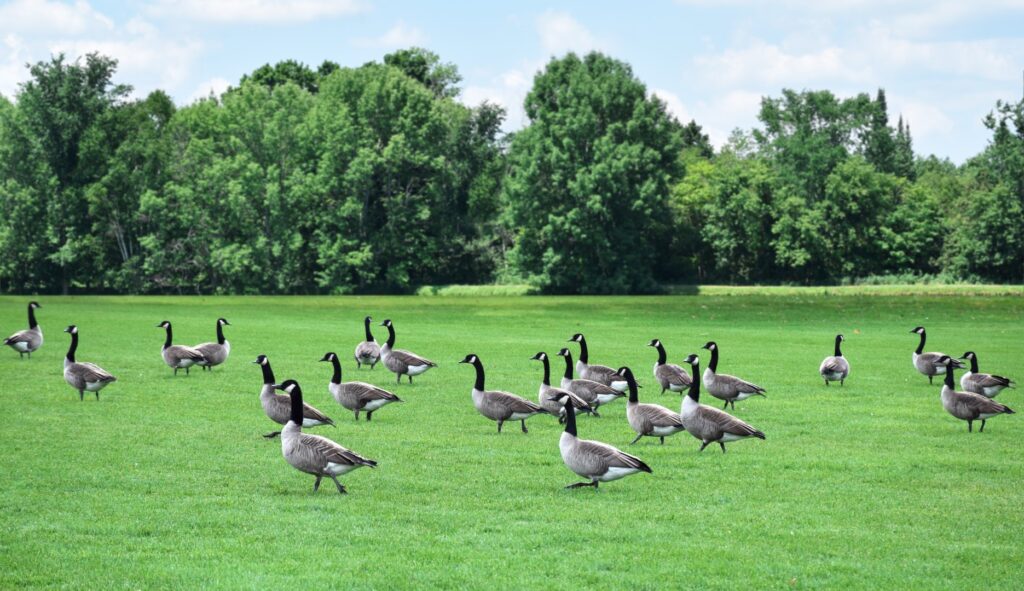
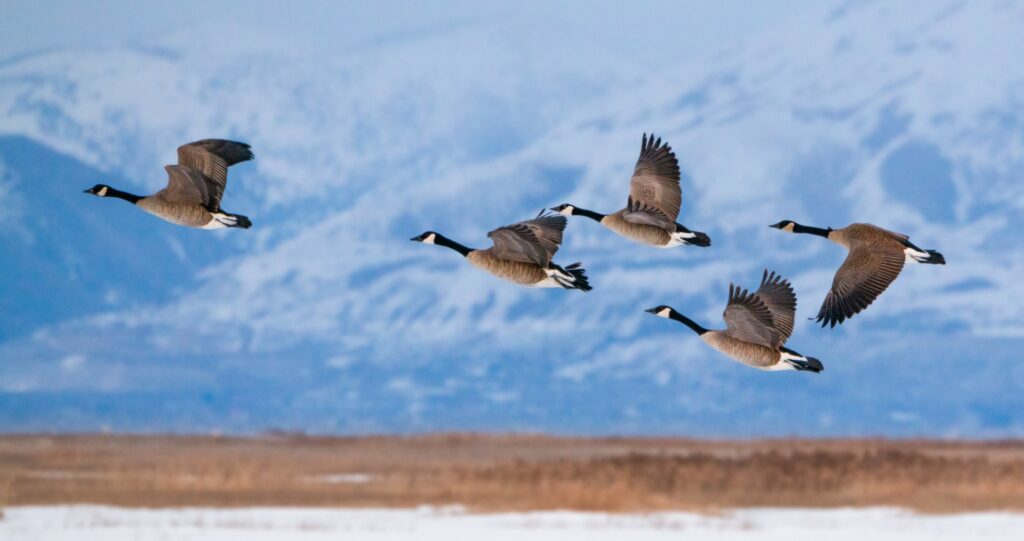
FAQ on the Canadian goose
How long do Canadian geese live?
Canadian geese can live up to 24 years in the wild, although the average lifespan is usually about 10 to 12 years.
How can you tell a Canadian goose apart from other types of geese?
The Canadian goose is recognizable by its black neck, black head with a wide white strap that extends from the cheeks to under the throat, and its gray-brown body. Other types of geese may have different color patterns and often do not have the same distinctive white band on the head.
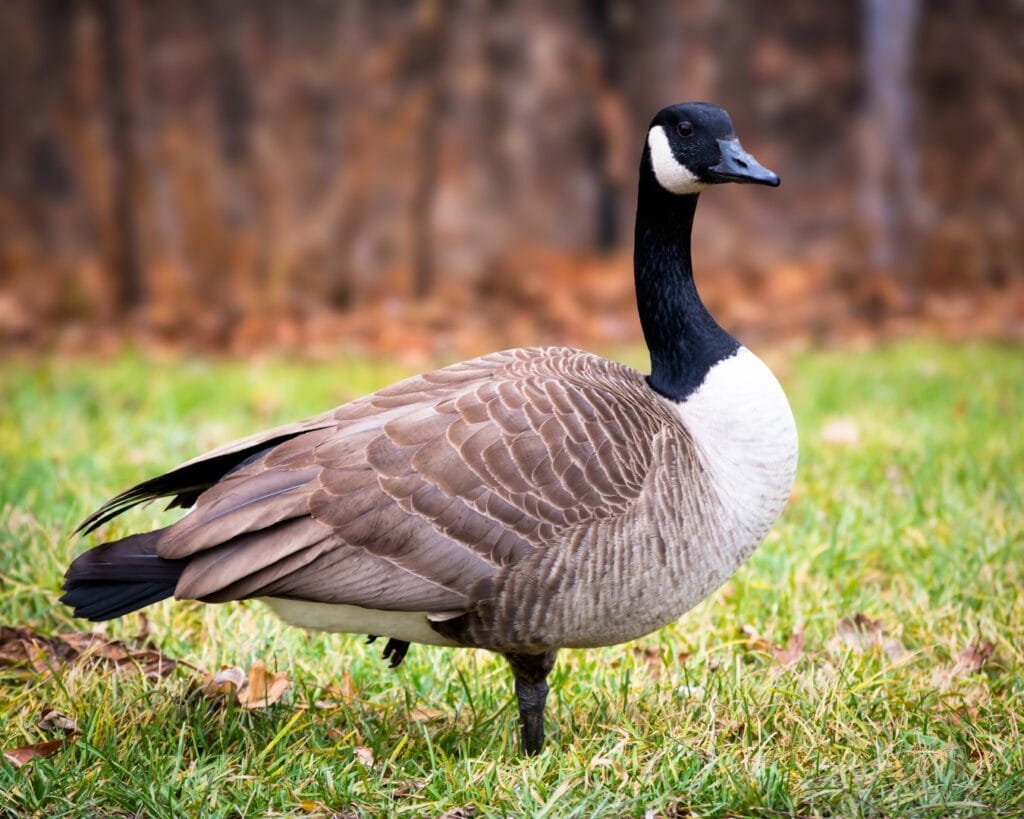
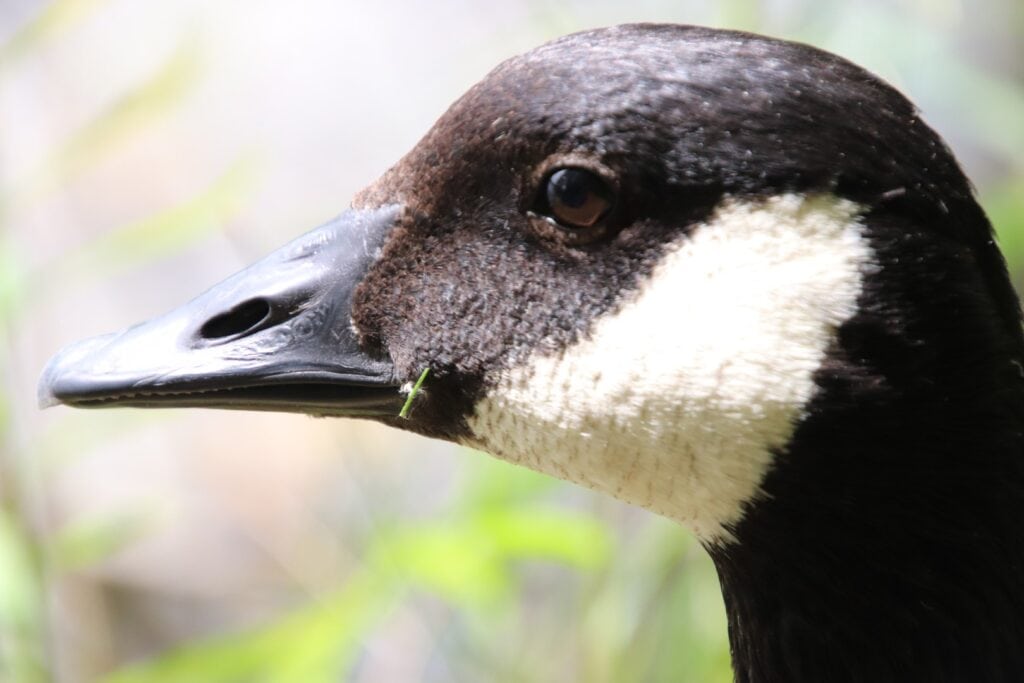
Do Canadian geese return to the same place every year?
Yes, Canadian geese have a strong fidelity to their nesting and wintering sites. They often return to the same place, or nearby, each year to nest and raise their young.
Are Canadian geese monogamous?
Yes, Canadian geese generally form monogamous pair bonds that last for life. If one partner dies, the other may find a new partner.
Why do Canadian geese migrate in "V" formations?
The “V” formation helps save energy and increase flight efficiency. Each bird flies in the wake of the bird in front of it, thereby reducing air resistance. Birds regularly change positions to evenly distribute fatigue among them.
What should I do if I find an injured or sick Canadian goose?
It is advised to contact a local wildlife rehabilitation center or the relevant environmental authorities. Do not attempt to treat the bird yourself, as this could cause more harm to it or be dangerous for you.
Can Canadian geese be considered pests?
Although considered an iconic and protected species, in some areas, Canadian goose populations can cause damage to crops, golf courses, and other green spaces due to their feeding and the deposition of their droppings. Non-harmful management methods, such as habitat modification, are used to minimize these impacts.
How to Help Canadian Geese
You can contribute to the conservation of Canadian Geese by protecting natural habitats, avoiding feeding them inappropriate food, and supporting conservation organizations.
The risks associated with the Canadian goose
The Canadian goose appears on the list of species protected by laws concerning migratory birds. That’s why large colonies of this species can now be seen near ponds and lakes, in cities and parks, on golf courses and riverbanks, and near where humans live. Our team has a solution for all the problems caused by geese.

